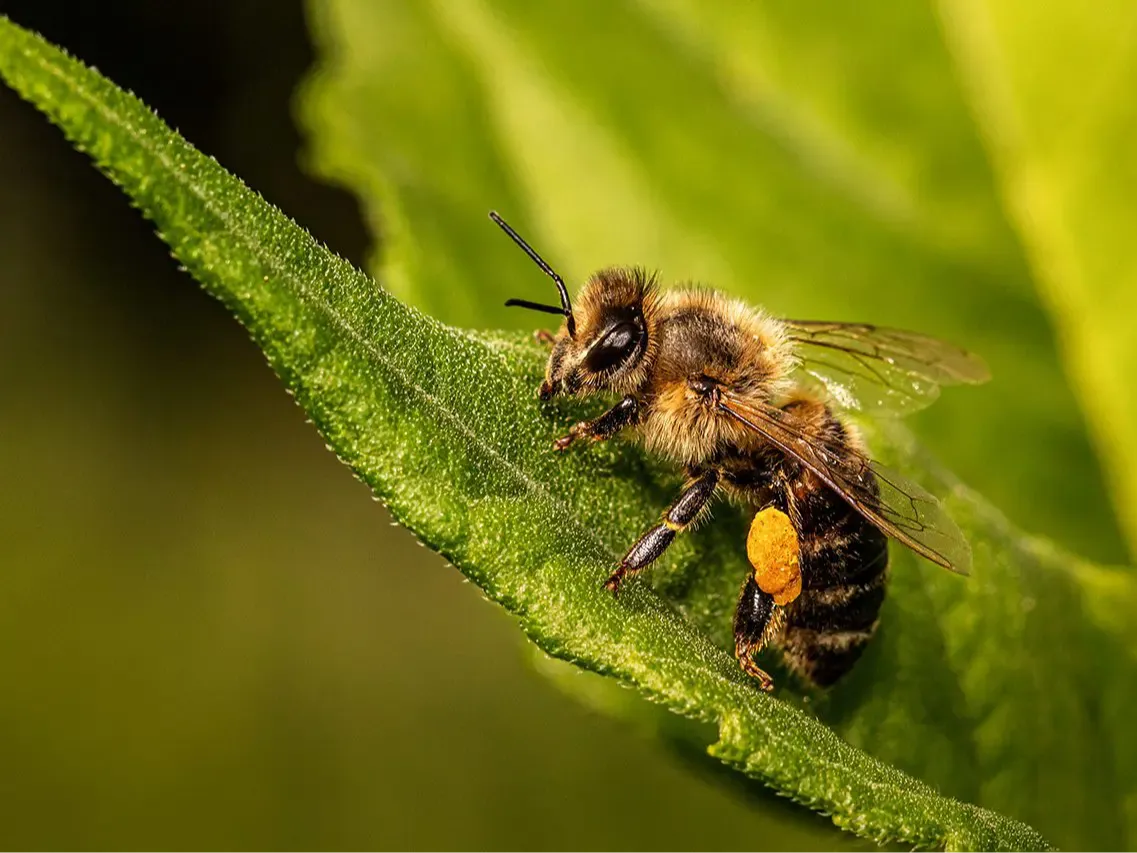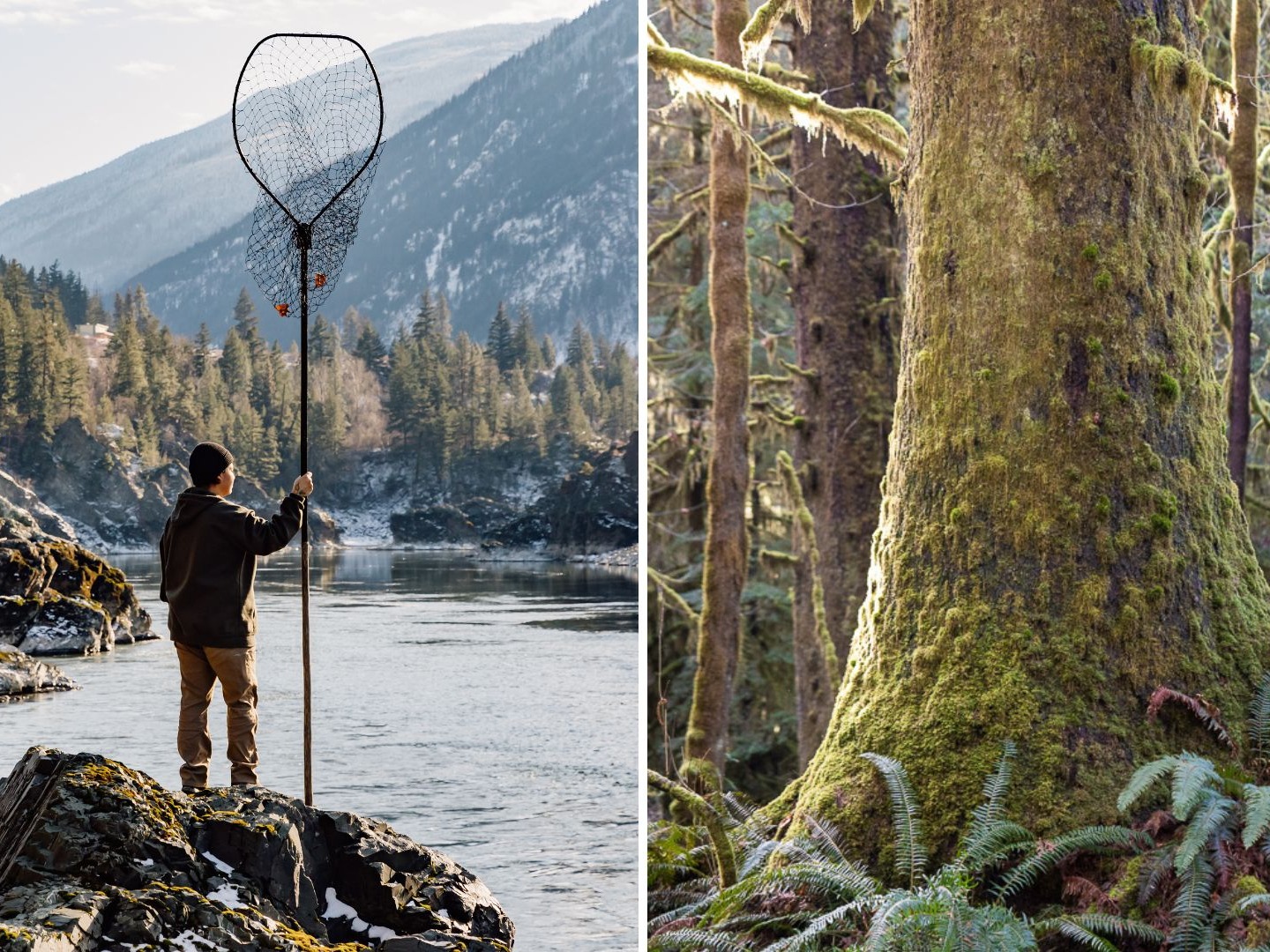
Sustainability
Drones, AI join battle against wildfires with big assist from investment in networks
Jun 5, 2024
(Above) A Flash Forest employee operates a drone that will fire seed pods into the ground below, planting millions of trees in fire-ravaged areas.
Canada’s wildfire crisis hits close to home for Cameron and Bryce Jones.
In 2003, the brothers moved with their family to British Columbia’s Okanagan region, renowned for its fruit orchards and vineyards. Months later, a massive wildfire destroyed more than 250 square kilometres of land and burned around 240 homes to the ground.
The Jones’ home was spared, but the fire scorched their backyard and left the brothers – and tens of thousands of others who survived the smoke and flames – emotionally scarred.
Two decades later, that experience sparked a game-changing idea – among an increasing number of technology-driven solutions with potential to play a critical role in the fight against seasonal wildfires, from early detection to reforestation.
The Jones brothers head up
Flash Forest
, a Toronto-based reforestation startup that blends AI, drones and ecological science to plant trees quickly, and on a large scale, in fire-ravaged areas. It’s taken them almost four years and more than 100 different ‘recipes’ to come up with the perfect seed pods that can germinate even in drought conditions.They load the pods onto drones, and from the air they can fire around 20 seeds a second to the ground. Flash Forest now launches up to a million seed pods every day and it aims to scale up and plant one billion trees in Canada over the next several years.
“We want to transform how tree planting is done,” says Cameron Jones, Flash Forest’s co-founder and COO.
Innovations like this come at a critical time.
Last year, flames reached record-breaking levels in Canada, burning nearly 25,000 square kilometres of land and forcing at least 33,000 people from their homes in B.C. alone. Across the country, 18.5 million hectares of land, or 5 per cent of Canada’s entire forest area, were engulfed in fires in 2023 – the most in
recorded history
.Four people lost their lives fighting the fires, more than 150,000 people were displaced and choking smoke triggered extreme air-quality warnings in Ontario, Quebec, Nova Scotia, the Northwest Territories, Alberta and B.C.
Fueled by an unusually warm and dry spring, B.C. is
already preparing
for an early start to the 2024 wildfire season, with the province urging residents to begin preparing for a worst-case scenario.Of course, digital solutions require powerful networks to enable the outcomes they are looking to drive. Flash Forest uses TELUS’ world-leading networks, allowing Jones and his team to effectively operate their drones – often in extremely remote areas where a lot of the wildfires take place. The fast and reliable network connectivity enables them to gather real-time data in the field and use that data to deepen their research, refine their approach and, ultimately, improve pod success.
That means more trees, each one an essential step in reversing climate change. Trees naturally absorb and store carbon dioxide, which reduces greenhouse gases in the atmosphere, and regulate precipitation, which aids in preventing extreme environmental events, such as wildfires, floods and drought.

A Dryad Networks sensor ready to detect early signs of forest fire.
Reliable, resilient and faster connections
TELUS, through its
TELUS Pollinator Fund for Good
, has committed nearly $50 million in innovative startups, including Flash Forest, that are driving social and environmental change to make the world a better place.Driven by a belief in profit with a purpose, TELUS is also providing these changemakers with the connectivity they need by investing $73 billion to upgrade network infrastructures across Canada by 2028.
“Telecommunications are an essential service at the best of times, and critical at the worst of times,” says Nazim Benhadid, chief technology officer at TELUS. He adds that reliable networks are critical to making sure impacted people and frontline emergency workers stay connected, and that Canadians can access essential information during wildfire season and other climatic events.
Part of the investment is dedicated to strengthening TELUS’ networks to be even more resilient and reliable in the face of the climate crisis. That includes proactively investing in fibre-optic Internet, Canada’s most sustainable Internet technology. Not only is fibre 85% more energy-efficient than copper, but it’s also more resistant to environmental factors, making it more reliable and less prone to outages or disruptions during severe weather emergencies.
“It’s important to us that the growth of our digital footprint does not correspond to the growth of our physical footprint. The transition from copper to fibre has already led to the reduction of more than 7,400 tonnes of greenhouse gas emissions and it has allowed us to recycle and repurpose over 3,600 tonnes of copper, offsetting the need to mine new copper sources,” says Benhadid.
TELUS is also enhancing its 5G network with
Open RAN technology
across Canada, creating more reliable, adaptable and faster connections, while cutting down on energy use.Additionally, in direct response to climate emergencies, the company has built duplicate components within its fibre infrastructure to safeguard connectivity. In 2021, for example, the “atmospheric river” flood in B.C. damaged two of TELUS’ transport routes – major, long-distance pathways for data transmission – that connect B.C. to Alberta. But because TELUS had a third redundant transport route, communications in Western Canada were still able to get through.
“These connectivity highways between provinces are very expensive to build,” says Benhadid. “In normal times, we’d only need one, but we built three because we knew that area is prone to damages from landslides, flooding and fires.”
Since 2000, TELUS has invested more than $259 billion to build and maintain network infrastructures in Canada.
Reason for hope
In addition to Flash Forest, TELUS is also using its Pollinator Fund to support
Dryad Networks
, a Berlin-based startup that provides ultra-early wildfire detection technology as well as health and growth monitoring solutions for public and private forests through the use of solar-powered sensors in large-scale Internet of Things (IoT) mesh networks.Already this year, Dryad’s small, green hexagonal sensors have been deployed across 85 hectares around Yale, B.C.—a township on the Fraser River, halfway between Vancouver and Kelowna. The sensors are part of a Canadian pilot project to assist in forest fire detection and, ultimately, suppression before they spiral into dangerous wildfires.
“We’re creating low-cost, solar-powered networks in the forest,” says Dryad’s CEO Carsten Brinkschulte.
Brinkschulte says TELUS’ wireless networks are key to his technology, as Dryad relies on them to connect the wildfire sensors to the internet.
“Mobile operators don’t usually have a valid business case to bring their network infrastructure into the depths of forests where there are no smartphone users,” he says. “But without the connectivity they provide, we wouldn’t be able to do anything. So TELUS is a key partner for us here.”
As Canadians, and the world, brace for what is expected to be another dangerous wildfire season, innovators like Brinkschulte and Cameron Jones insist there is reason for hope.
Last year, Jones and his team went back to Alberta and B.C., including the Okanagan, to check on trees they first planted in 2022. They discovered baby Douglas fir trees, hybrid spruce and jack pines the size of a palm—135,000 of them.
“Ninety per cent of the trees we had planted actually grew, even after two summers of drought,” says Jones. “It’s a huge win for us.”
In 2023, Flash Forest planted a million trees with even better technology and better seed pods, so they anticipate the success rate will be even higher.
“I know wildfires are an emotional topic for Canadians,” he says. “But we should be optimistic because there are options.”
This story first appeared in
The Globe and Mail
.

